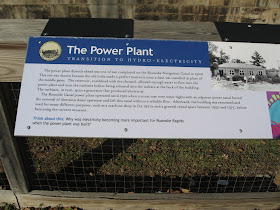
A bateau ( also spelled batteau and batteaux for plural ) was a flat bottomed shallow draft boat pointed at both ends used to transport goods along the rivers in the late 1700's and into the 1800's. They were propelled by using long poles
over the side reaching the bottom.
This system worked great and these batteaux could carry 5 to 8 tons. They came in all sizes but generally about 8 feet wide and 60 feet long for the larger ones and a cross between a canoe (easily navigational) and a raft (great carry capacity).
Being pointed at both ends, they didn't have to be turned around exposing the long sides to the rivers current. They could "poled" up river by keeping to the side of the river with less current.
Rapids posed two problems, going down stream the boats could become uncontrollable and damage the cargo, and going upstream over the rapids was sometimes impossible.
The Roanoke river had such rapids located in city of Roanoke Rapids, North Carolina (go figure) and to alleviate the problem the Roanoke Canal was began in 1819 and built using mostly slave labor. The canal diverted water thru locks ( same as today but on a much smaller scale) to raise and lower the boats over the rapids.
The canal was 8.5 miles long and was in operation until 1875.

One of the locks survived and now has a museum to preserve its history. As you can see in the photo (click it to enlarge), the lock could be filled or emptied in less than 5 minutes and operated by one man when the water levels stabilized.

They have a bateau in the bottom of the lock. There was two locks at this location that raised or lower a boat a total of 38 feet.

A power plant was later constructed to make use of this abandoned lock.

I find this stuff very fascinating as I can relate to the technology used.
No comments:
Post a Comment
Comments will not be posted if you ask.